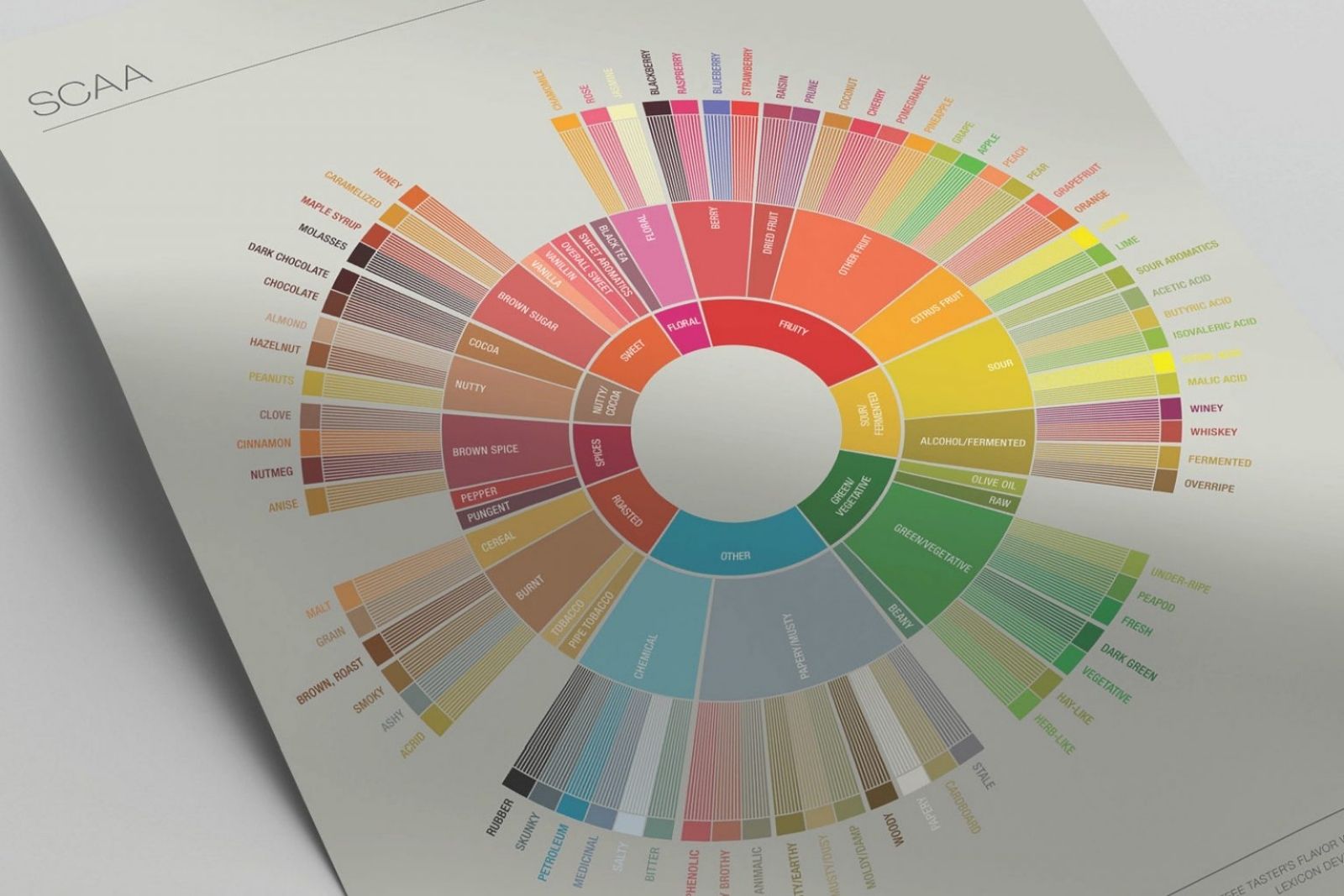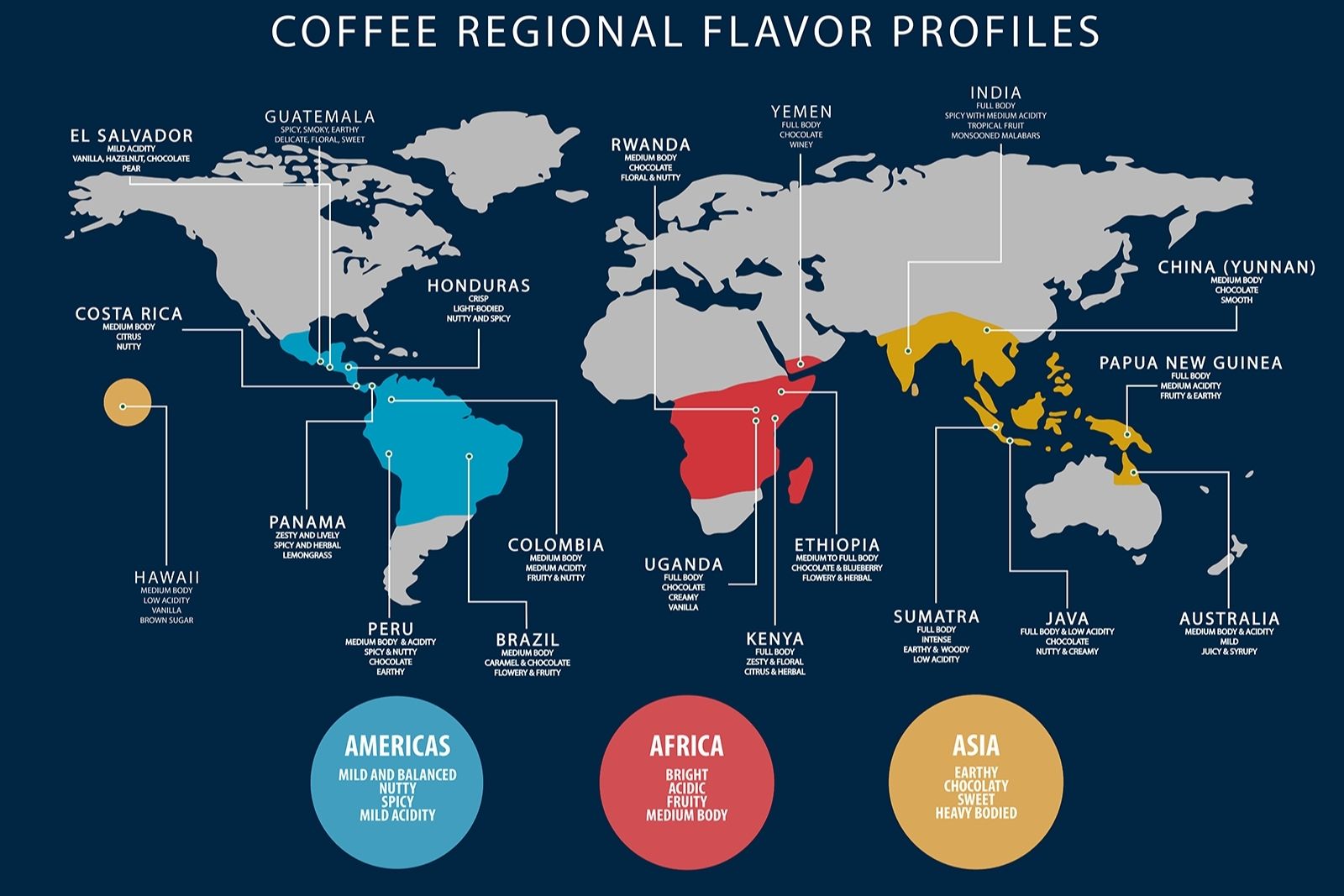
A Beginner’s Guide To Coffee Flavour Profiles: Coffee is a constant. Coffee flavour is always specific to the land where it grows and grows. But coffee is also a variable.
Based on living conditions, subjective characteristics and the hearts of people interacting around, the taste of the coffee will change and vary. The deeper the feeling, the more layers of flavour of coffee can be seen. Each coffee variety has its unique colour that is perceived by taste, smell and even the senses of emotions.
That flavour is created and characterized by many factors. Still, the most important is the material area, coffee variety, and next is the processing program as well as the storage time.
Coffee Flavour By Ingredients Of Ingredients
The raw material area – the motherland where the coffee trees bloom is the most critical factor in forming a unique flavour. Experts often refer to “pure coffee” as coffee brewed from beans from a single country and preferably from a cooperative or plantation.
If a purebred variety is top quality and adequately roasted, you will have a cup of coffee with an authentic taste that no finesse can achieve. The flavour of coffee reflects the unique, organic qualities of the soil in which it grows, whether it has been watered in cold rain or sunbathing in the warm air and matured in harsh sunlight or shady.
Each retains its distinct, and many have their character.
Therefore, farmers must understand the motherland to improve the soil or choose suitable farming areas for coffee. However, improving soil quality is quite tricky because it is related to the soil’s natural nutrients. Therefore, farmers often have to experiment on different soil types and evaluate the results before starting mass farming.
The Coffee Belt has four central coffee regions with many prominent localities and cooperatives suitable for growing coffee and producing high-quality aromatic products.
Africa and South & Central America are famous for their excellent coffee beans in the international coffee arena. Besides, Asia, the Caribbean and North America are no less competitive with various coffees.

Coffee Flavor By Varieties And Type
Coffee taste is also different due to variety and stuff. The five coffee varieties identified today in the research world are Arabica Bourbon, Arabica Typica, Arabica Ethiopia Heirloom, Liberica – Excelsa and Robusta.
Arabica coffee varieties are highly appreciated and preferred to provide a rich, unique and exciting flavour and outstanding caffeine quality.
A coffee tree can only be harvested after four years of cultivation. Trees can be exploited for 10-20 years depending on conditions and varieties; however, replacing the old trees and planting new ones after that time is necessary. This problem creates many difficulties for people during the four years of care and re-cultivation.
However, for good productivity and quality, this process is required. After replanting, the coffee flavour will sometimes change. Today, many scientists and farmers have begun to research and transplant to create better coffee varieties with good environmental adaptation and stable quality.
Coffee Flavour Processing Method
After nature chooses its destiny, the processing and preservation method will determine the final value to the coffee drinker. Usually, farmers will divide the amount of coffee harvested by lots (i.e. batches) based on the cultivated land, choosing to process according to different methods (wash, natural, honey) depending on the purpose and taste.
Wishes of preprocessors at primary processing stations. With three main processing methods: wet, dry (natural) and semi-wet (honey), coffee is supported to promote flavour, enhance flavour, and portray hidden beauty.
Coffee that undergoes wet processing often results in precise and uniform flavours and requires a more intense roasting profile. Dry processing leaves less acid in the coffee, but it takes longer. Coffee grown in dryland is usually processed by natural methods.
Coffee Flavour Through Storage Conditions
Preservation is the final condition, besides brewing, which helps preserve the flavour integrity of coffee beans. All coffee has been wrapped in burlap sacks and transported by water in containers in recent years.
Roasters and importers typically do cupping and sample approval of coffees before shipping. Currently, many roasters conduct direct trade with farmers, sharing assessment information about green coffee and cupping with the farm to ensure freshness and quality.
When the coffee beans are freshly processed, when they are transported, when they arrive at the docks, before they are roasted, in each stage, the taste of coffee also changes a lot; Similar to eggplant after roasting, over time: freshly roasted, burned for one week, one month, three months, the taste is also different.
As mentioned many times, after resting, reducing “inhibition” by the impact of the environment, coffee will have a more stable and delicate taste. Besides, storage conditions also have a significant effect on the taste of coffee.
Many roasters even have to build a storage area with strictly controlled temperature and humidity for each type of coffee to keep the inherent flavour and limit the damage of coffee products.
Until the end, when the coffee quietly flows on the coffee cup at the Workshop, the worker will clarify the unique flavour for you to score according to each criterion, including the love of 43 Factory Coffee Roaster with fragrant coffee beans.
